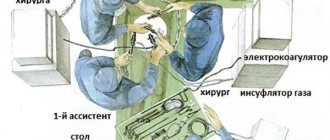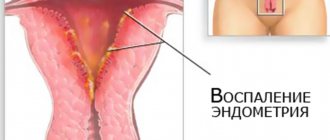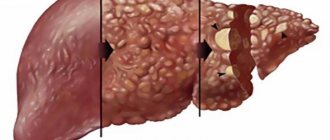Characteristic
The main reproductive function in the female body is performed by the ovaries.
This is a paired organ and a sex gland at the same time. With normal functioning of the gonads, follicles are formed in each ovary. Their number ranges from 3 to 7. Inside the follicle there is an egg, which, after maturation, comes out of the shell, preparing for fertilization.
It is absolutely clear that follicular formations undergo natural selection, where the dominant “bubble” is determined (1-2, less often 3).
When the desired “condition” is reached, the follicle ruptures and a corpus luteum is formed. And the egg is sent to the uterine cavity for fertilization.
If during the formation process from 8 to 12 follicles are synthesized, then this condition is called “multifollicular”, that is, a larger number of them are isolated.
This process is not pathological. It is impossible to suspect such a “feature” on your own. The first signs or detection of an increased number of follicular formations are possible with ultrasound examination.
This process is observed in approximately 25 healthy women. To prevent the development of more serious consequences, you should consult a gynecologist.
Multifollicularity in the absence of the necessary correction can cause the appearance of cystic formations. Which is primarily reflected in the reproductive system.
Diagnostic methods
In order to detect and distinguish between MFN and PCOS, the following diagnostic procedures are performed:
- Ultrasound examination of the pelvic organs;
- Laboratory analysis of blood fluid for the content of hormonal elements;
- Folliculometry – monitoring the dynamics of enlargement and disruption of the integrity of mature follicles;
- Examination of a vaginal smear (to identify inflammatory or infectious processes).
The results will help the doctor determine what condition is progressing in the woman’s body, and whether it is necessary to prescribe therapeutic measures.
Causes
The formation of an increased amount is influenced by a number of factors and reasons.
The reasons for the emergence of MFN include:
- Genetic predisposition (including inheritance from mother to daughter);
- Long-term use of oral contraceptives. Sometimes multifollicularity is a consequence of discontinuation of hormonal contraceptives. Then the phenomenon is considered temporary and disappears after 2-3 cycles;
- Breastfeeding period;
- Insufficient secretion of luteinizing pituitary hormone;
- Puberty period. The period when the menstrual cycle is not established, and the frequent occurrence of a long delay in the onset of menstruation;
- Disturbances in the functioning of the endocrine system;
- Jumps in weight gain or loss;
- The body is in a state of shock or in a state of severe stress.
Symptoms of multifollicular ovarian structure
In most cases, this disorder is detected completely by accident during routine examinations or in connection with the diagnosis of other possible diseases.
There are usually no actual signs of multifollicular ovaries. Only with an unfavorable course are obvious symptoms observed, including those expressed by menstrual irregularities.
The problem lies in the non-ripening of the dominant follicle. In this case, the egg is not released and does not enter the fallopian tube.
When a pathology such as multifollicular ovaries develops, symptoms can be expressed by complete amenorrhea, i.e. cessation of menstruation for about six months.
This is the result of a lack of ovulation of eggs. In this case, the appearance of a condition such as multicystic ovarian disease is often observed.
This disorder develops when the eggs stop maturing and the follicle begins to fill with cloudy fluid, forming a cyst.
Often women are most concerned about whether it is possible to get pregnant with multifollicular ovaries. This is possible, but there will be certain difficulties.
In conditions of an unstable menstrual cycle, it is impossible to predict, without additional ultrasound, when the egg will mature and fertilization will become possible.
At the same time, the multifollicular structure of the ovaries is a serious reason for more careful management of pregnancy by an obstetrician-gynecologist.
This disorder may well cause premature birth or spontaneous abortion.
If the multifollicular structure of the ovaries is the result of a serious hormonal imbalance or the progression of endocrine diseases, it is necessary to treat in advance the pathologies that caused this deviation.
Only after the condition has stabilized can you safely plan a pregnancy.
Ovulation
Oogenesis will not change. Can form more than 8 “bubbles” with an egg inside. No more than two of them will be viable.
Conception and development of gestation proceeds according to the standard pattern.
With hormonal imbalance or disrupted menstrual cycle, problems with conception arise.
Due to the increase in the number of follicles, the egg does not fully mature, which means there is no ovulation.
How to get pregnant with MF:
- visit a gynecologist at least 2 times a year;
- undergo ultrasound diagnostics;
- do not develop gynecological diseases, treat them in a timely manner;
- Monitor your menstrual cycle carefully.
In case of multifollicularity, during pregnancy planning it is necessary to monitor the ovulation process. Measure basal temperature, use special test strips, and conduct ultrasound examinations.
Signs
The process of changing the number of follicles has no clinical manifestations. It can be suspected if there is a long absence of menstruation (from 3 to 6 months), as well as pain during sexual intercourse (not always).
Indirect symptoms:
- skin rashes in the form of acne;
- increased oily skin and hair;
- hair growth on the nipples or face;
- change in voice tone;
- nagging pain in the lower abdomen and lumbar region;
- painful premenstrual syndrome.
Diagnostics
The main diagnostic method is ultrasound examination. Multifollicularity can be confused with polycystic ovarian disease, so you need to contact a professional or undergo ultrasound diagnostics in two or more offices.
An approximate diagram of the differences between MFN and PKY:
- the volume does not change in MF, while in polycystic disease it is increased. The same is observed with wall thickness;
- the diameter of the follicles in MF is no more than 8 mm, in polycystic disease – more than 10;
- pronounced hormonal disturbances in PCOS, which are not observed otherwise.
To determine the diagnosis, laboratory tests are prescribed to determine the amount of female hormones and thyroid hormones.
During an examination by a gynecologist, a smear is taken from the cervical canal to differentiate epithelial cells and to exclude bacterial infection.
Impact of the disease on pregnancy
During the period of bearing a child, a pregnant woman is at risk. Despite the fact that pregnancy with such a disease is possible, there is a high probability of its spontaneous termination (especially before the 12th week).
In some cases, the development of premature birth. MF has no effect on the course of pregnancy. That is, it is not a cause of toxicosis or arterial hypertension.
During the gestation period, the formation of new follicles does not occur, so there is no hormonal imbalance.
Changes in hormonal levels indicate the progression of polycystic ovaries.
Due to a violation of the ratio of estrogen and progesterone, there is a threat of termination of pregnancy in any trimester of the gestational period.
A pregnant woman should frequently visit an ultrasound room, take hormone tests and adhere to proper nutrition.
Diagnosis of multifollicular echostructure of the ovaries
As a rule, this condition of the ovaries is diagnosed accidentally during an ultrasound scan and is characterized by:
- The size of the ovaries is within normal limits or slightly larger.
- The size of the follicles is no more than 9 mm. For PCOS – from 12 or more.
- Echogenicity. The multifollicular echostructure of the ovaries does not exceed the echogenicity of the uterus.
- The location of the follicles is random.
- The thickness of the capsule is within normal limits.
Your doctor will tell you more about the echo signs of multifollicular ovaries on ultrasound during the examination. You can find out the cost of the study by calling the above number.
Treatment
There is no specific treatment to prevent the formation of an increased number of follicles. However, in the absence of a negative process, treatment is not required.
The need arises in the absence of menstruation and ovulation. A gynecologist or endocrinologist identifies the root cause of the development of ovarian follicularity, determines the severity and nature of the disease.
Treatment is carried out with hormonal drugs, which are designed to improve the hormonal status of a woman.
Polycystic ovary syndrome can be combined with multifollicularity of the organ. In this case, hormone therapy is carried out, then ovulation is stimulated (the often prescribed drug Clostilbegit).
If the simulation is successful, treatment is continued with progesterone-containing substances (suppositories, tablets and injections).
If treatment fails, surgery is replaced. One of the methods used is laparoscopy. Surgery is necessary for long-term infertility, or for the progression of cystic cavities in the ovaries.
Multifollicular ovaries: treatment
If a woman with multifollicular ovaries does not have any hormonal imbalance, and her own ovulation occurs regularly, then they are not prescribed any drug therapy. In this case, the existing syndrome is regarded as one of the variants of the norm.
Treatment of multifollicular ovaries is necessary only if a woman does not experience ovulation confirmed by folliculometry for 4 to 5 menstrual cycles in a row. In this case, a joint examination of the woman is carried out by a gynecologist and an endocrinologist. Once the exact cause of multifollicular ovaries has been established, the woman is prescribed appropriate treatment. All doctor's recommendations and prescriptions should be taken as seriously as possible. Never take hormonal drugs on the advice of friends or try to treat multifollicular ovaries with traditional methods!
Video from YouTube on the topic of the article:
Folk remedies to combat the disease
Due to the lack of specific treatment, women who want to have children resort to alternative medicine to restore hormone levels and stimulate oogenesis.
Before starting treatment you need to make sure:
- in the correctness of the diagnosis;
- in the absence of allergic reactions.
Alternative medicine recipes are based on herbal infusions and decoctions.
Pour 1 teaspoon of dried nettle and yarrow leaves into a ceramic bowl and pour 250 ml of boiling water. Prepare the decoction overnight to allow it to settle. In the morning, strain and drink on an empty stomach. Repeat the procedure for 6 months: with breaks of 7 days every month.
Pour 0.4 liters of vodka over the boron uterus grass (take at least 50 g of herbs). Hide the tincture in a dark place and do not open it for 21 days. After 3 weeks, strain and take 20 drops orally 3 times a day before meals.
The herb helps regulate hormonal balance.
Herbal collection for normalizing hormones:
- Valerian root;
- Birch leaves;
- Peppermint;
- Buckthorn tree bark;
- Yarrow.
Dry the collected herbs, mix, and pour boiling water over 1 tablespoon. Infuse in a warm place (for example, in a thermos). Use daily for 3 months.
Author: Elena Yuryevna, obstetrician-gynecologist of the highest category Specially for the site kakrodit.ru
Pregnancy planning and treatment
Synthetic drugs
In most cases, multifollicular ovaries do not require treatment, which is determined after determining hormone levels and excluding polycystic disease. In case of multifollicular ovaries and pregnancy planning, observation by your specialist is sufficient.
But during anovulatory cycles, they resort to the help of synthetic drugs to normalize hormonal levels.
Identified causes and symptoms of multifollicular ovaries during pregnancy, the gynecologist can prescribe treatment with both synthetic drugs and folk remedies
Folk remedies
For symptoms of multifollicular ovaries and pregnancy planning, treatment with folk remedies is sometimes used, but medical supervision is required. During pregnancy, the treatment of multifollicular ovaries uses decoctions of nettle with yarrow, red brush grass, hogweed, as well as various herbs.











